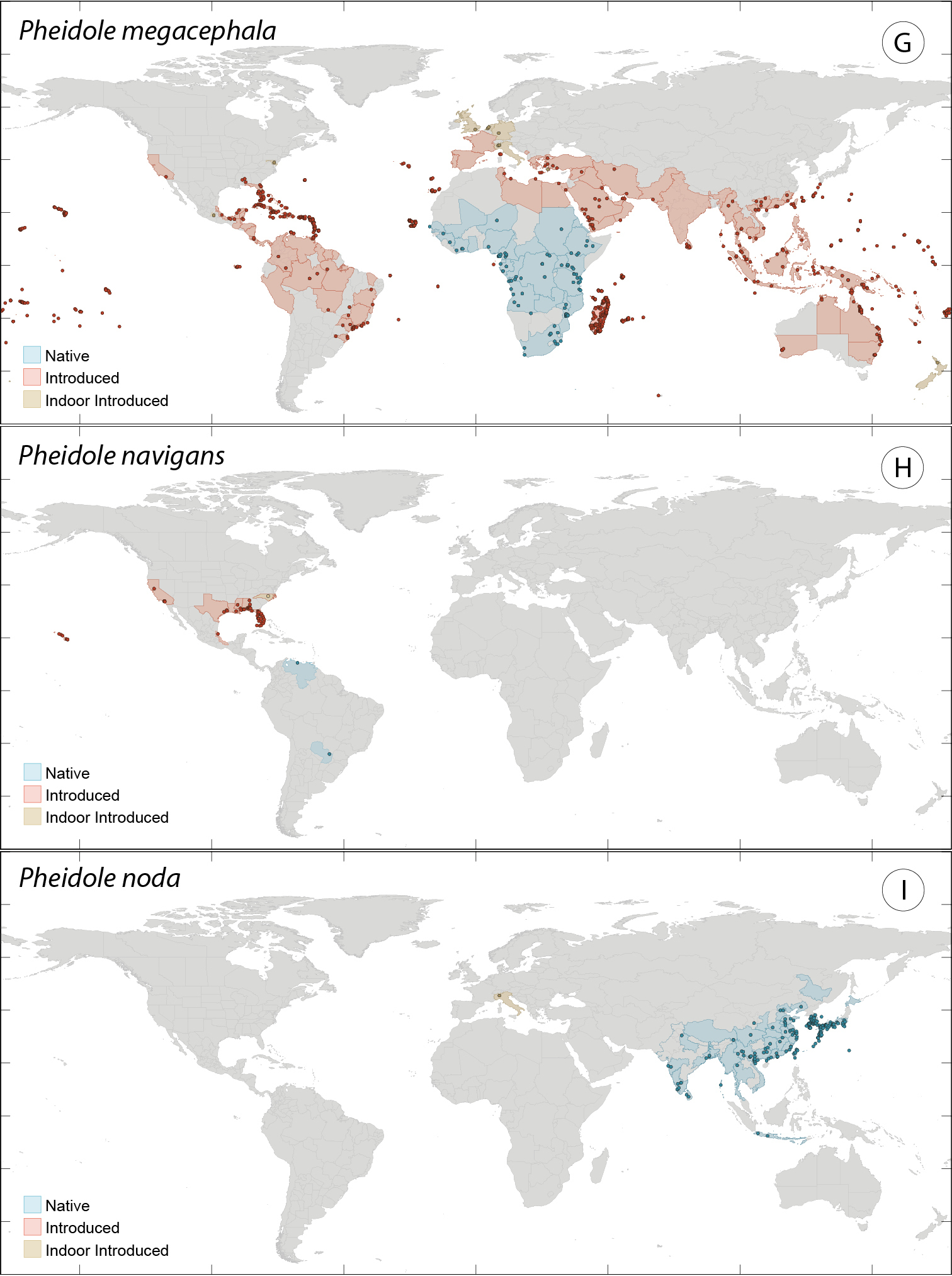
|
||
|
Geographic distribution of introduced Pheidole species. A P. anastasii Emery B P. bilimeki Mayr C P. fervens F. Smith. Circle symbols represent georeferenced localities. Shaded polygons represent administrative units from which the respective species have been recorded as occurring. Larger countries are subdivided into states or provinces for increased geographic resolution. Blue = putative native occurrence records. Red = putative introduced occurrence records. Yellow = records for indoor occurrences (heated buildings, greenhouses, etc.) in regions where the species is incapable of year-round outdoor survival. Geographic distribution of introduced Pheidole species. D P. flavens Roger E P. flavens-complex (excluding determined records of P. flavens Roger and P. navigans Forel) F P. indica Mayr. Circle symbols represent georeferenced localities. Shaded polygons represent administrative units from which the respective species have been recorded as occurring. Larger countries are subdivided into states or provinces for increased geographic resolution. Blue = putative native occurrence records. Red = putative introduced occurrence records. Yellow = records for indoor occurrences (heated buildings, greenhouses, etc.) in regions where the species is incapable of year-round outdoor survival. Geographic distribution of introduced Pheidole species. G P. megacephala (Fabricius) H P. navigans Forel I P. noda F. Smith. Circle symbols represent georeferenced localities. Shaded polygons represent administrative units from which the respective species have been recorded as occurring. Larger countries are subdivided into states or provinces for increased geographic resolution. Blue = putative native occurrence records. Red = putative introduced occurrence records. Yellow = records for indoor occurrences (heated buildings, greenhouses, etc.) in regions where the species is incapable of year-round outdoor survival. Geographic distribution of introduced Pheidole species. J P. obscurithorax Naves K P. parva Mayr L P. proxima Mayr. Circle symbols represent georeferenced localities. Shaded polygons represent administrative units from which the respective species have been recorded as occurring. Larger countries are subdivided into states or provinces for increased geographic resolution. Blue = putative native occurrence records. Red = putative introduced occurrence records. Yellow = records for indoor occurrences (heated buildings, greenhouses, etc.) in regions where the species is incapable of year-round outdoor survival. Geographic distribution of introduced Pheidole species. M P. punctatissima Mayr N P. rugosula Forel O P. vigilans (F. Smith).Circle symbols represent georeferenced localities. Shaded polygons represent administrative units from which the respective species have been recorded as occurring. Larger countries are subdivided into states or provinces for increased geographic resolution. Blue = putative native occurrence records. Red = putative introduced occurrence records. Yellow = records for indoor occurrences (heated buildings, greenhouses, etc.) in regions where the species is incapable of year-round outdoor survival. |